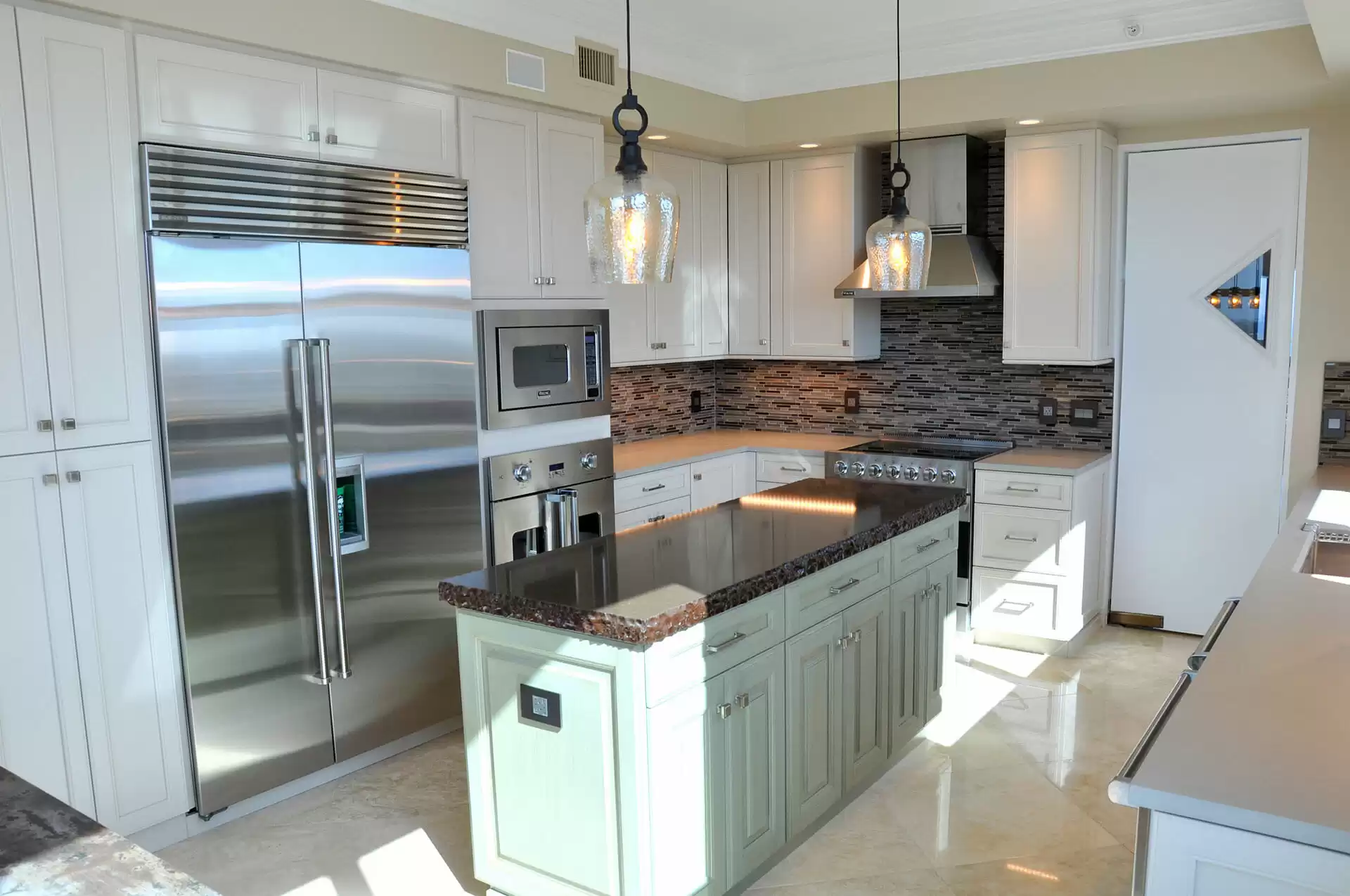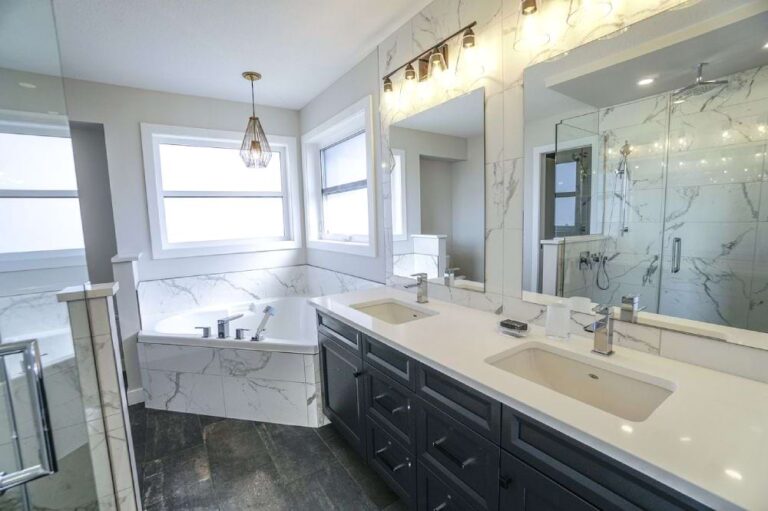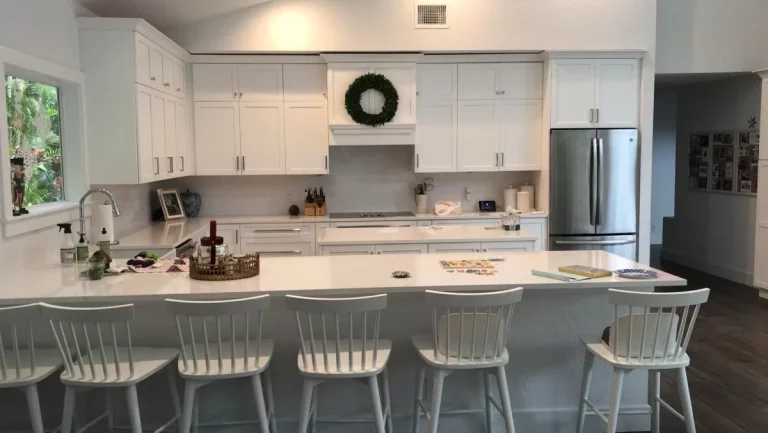Remodeling Your Kitchen
Remodeling your kitchen can be an exciting yet daunting task. It’s often said that the kitchen is the heart of the home, making it crucial to create a space that is functional, stylish, and meets the needs of your family. Whether you’re looking to update your outdated kitchen, create more space, or improve functionality, careful planning is essential to achieve your vision. In this step-by-step guide, we will walk you through the kitchen remodeling process, ensuring you feel informed and empowered every step of the way.

Step 1: Define Your Goals
Before diving into the nitty-gritty of kitchen design, take a moment to think about your goals for the remodel. Consider the following questions:
- What is the primary reason for this remodel? (e.g., outdated design, lack of storage, improving functionality)
- What are your must-haves? (e.g., a larger island, double ovens, more counter space)
- Are there any constraints you need to consider? (e.g., budget, existing plumbing, structural issues)
Defining your goals early on will guide your decisions throughout the remodeling process.
Step 2: Set a Budget
Establishing a realistic budget is one of the most crucial aspects of your kitchen remodel. It helps you determine what can and cannot be done within your financial limits. A few points to consider:
- Research Average Costs: Look into the average cost of kitchen remodels in your area. This can vary widely depending on the size of your kitchen, the quality of materials, and whether you’re making structural changes.
- Allocate Funds for Each Element: Break down your budget by category: cabinetry, countertops, appliances, flooring, lighting, and labor. Allocate a percentage of your budget to each area.
- Emergency Fund: Set aside a contingency fund (typically 10-20% of your budget) for unexpected expenses that may arise during the remodel.
Step 3: Gather Inspiration
Once you have a clear idea of your goals and budget, it’s time to gather inspiration. Explore various sources to find what resonates with you:
- Online Platforms: Websites like Pinterest, Houzz, and Instagram are gold mines for design inspiration. Create boards or folders to save images that appeal to you.
- Magazines and Books: Check out home improvement magazines and books from your local library.
- Showrooms: Visit kitchen showrooms or home improvement stores to see materials and layouts in person.
Take note of color schemes, layouts, and the overall feel of the designs you love.
Step 4: Hire Professionals
Depending on the scale of your remodel, you might need to hire professionals to assist with the project. Here are some common roles involved in a kitchen remodel:
- Interior Designer: If you seek help with layout and aesthetics, consider hiring an interior designer to turn your ideas into reality.
- Contractor: A general contractor can oversee the project and manage any subcontractors that may be needed (plumbers, electricians, etc.).
- Specialized Trades: If you’re not handling plumbing or electrical work on your own, ensure you employ licensed professionals for these tasks.
Step 5: Create a Design Layout
With your goals, budget, and professional help (if applicable) in mind, it’s time to create a detailed layout for your new kitchen. Elements to consider:
- Work Triangle: Ensure your design follows the kitchen work triangle – placing your stove, sink, and refrigerator in a triangular layout to improve efficiency.
- Zones: Define areas for cooking, prep, dining, and clean up to create a functional flow.
- Storage: Maximize storage by incorporating cabinets that reach the ceiling, pull-out drawers, or built-in organizers.
Step 6: Choose Materials and Finishes
With your layout in hand, it’s time to select materials and finishes that align with your vision and budget. Here are some key components:
- Cabinetry: Choose between custom, semi-custom, or stock cabinets. Consider the style, material (wood, laminate, etc.), and color.
- Countertops: Research different countertop options such as granite, quartz, marble, or concrete for their appearance and durability.
- Backsplash: A beautiful backsplash can be a statement piece in your kitchen. Consider tile, glass, or even open shelving.
- Flooring: Select flooring that is both attractive and durable. Options include hardwood, tile, laminate, or vinyl.
- Lighting: Plan for both task lighting (e.g., under-cabinet lighting) and ambient lighting (e.g., pendant lights) to create a well-lit space.
Step 7: Plan for the Renovation Phase
As you approach the renovation phase, prepare for the disruptions that come with remodeling. Things to plan for include:
- Timeline: Working with your contractor, create a detailed schedule to estimate how long the remodel will take and when key milestones will be reached.
- Temporary Kitchen Setup: If your kitchen is being extensively remodeled, set up a temporary cooking area in another room. Consider an electric kettle, microwave, or slow cooker for meals.
- Communication: Maintain open lines of communication with your contractor and any hired professionals to address any changes or issues as they arise.
Step 8: Oversee the Renovation
Once the renovation begins, your role is to oversee the project and keep everything on track. Here’s how to manage this phase:
- Stay Present: Regularly check in on the job site to monitor progress and quality.
- Document Everything: Keep records of materials and costs, and document any changes or issues that arise.
- Flexibility is Key: Be prepared for delays or changes in the plan. Stay flexible and communicate with your contractor to find solutions to any problems.
Step 9: Final Touches and Inspection
As the remodel nears completion, it’s time for the final touches:
- Review Work: Carefully inspect all aspects of the remodel, including cabinetry, countertops, plumbing, and flooring, to ensure everything meets your expectations.
- Add Personal Touches: Consider adding personal touches such as artwork, decorations, or even new kitchen gadgets that reflect your style.
- Clean Up: Schedule a thorough cleaning of the new space to prepare it for use.
Step 10: Enjoy Your New Kitchen!
After all the planning, budgeting, and hard work, it’s finally time to enjoy your newly remodeled kitchen. Take the time to appreciate your updated space and make the most of it with family meals, celebrations, and everyday gatherings. Whether you’re an aspiring chef or a busy parent, your new kitchen is a refined space for creating memories.
Conclusion
Planning your kitchen remodeling project doesn’t have to be overwhelming. By following these steps—defining your goals, setting a budget, gathering inspiration, hiring professionals, and carefully overseeing the process—you can turn your dream kitchen into reality. Remember, this is an investment in your home and lifestyle, and with the right approach, the result will undoubtedly be worth it. Happy remodeling!





